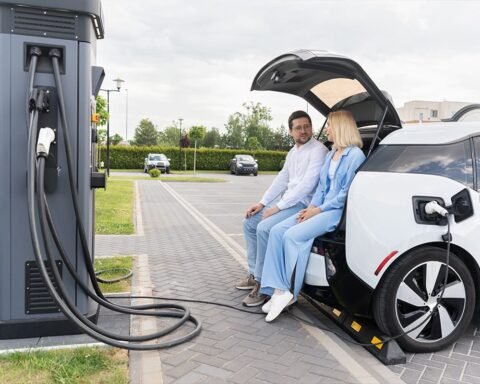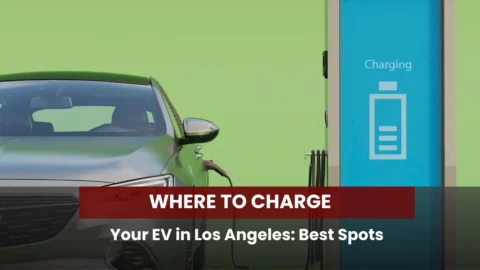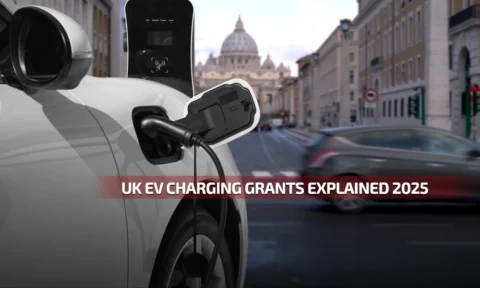The green valleys, dramatic coastlines, and winding mountain passes of Wales offer some of the most beautiful and challenging driving environments in the UK. For the growing community of Wales EV drivers, making the switch to electric is not just an environmental choice, nor is it a commitment to navigating these unique roads efficiently and with confidence.
While modern electric vehicles boast impressive ranges, the combination of elevation changes, variable weather, and the still-developing public charging network in some remote areas means that smart driving is essential. This comprehensive guide details the Top 7 EV Driving Tips specifically tailored for the rural driving EV experience in Wales, ensuring you maximize your range and enjoy every journey.
Tip #1 Master Regenerative Braking: Your Secret to Perpetual Motion
In the picturesque but often hilly terrain of Wales, regenerative braking is an EV driving tip that transitions from a feature to a necessity.
Unlike a traditional car, which wastes energy as heat when braking, your EV recovers kinetic energy when you lift off the accelerator or apply the brake, feeding it back into the battery.
Rural Application and Electric Car Efficiency Tips
- One-Pedal Driving: Many EVs offer a high regenerative braking mode often called ‘B’ mode or similar that allows for almost all deceleration using only the accelerator pedal. Mastering this allows you to slow down smoothly for corners or villages by simply easing off the accelerator, maximizing the energy sent back to your battery.
- Anticipation is Key: On a long downhill stretch, instead of using your friction brakes, lift off the accelerator earlier. This allows the regenerative system to work for a longer period, acting as a slow, continuous charge. Over a series of Welsh hills, this can add significant miles to your available EV range tips. It’s the ultimate electric vehicle tip for minimizing energy loss on undulating roads.
- The Benefit: On a 100-mile journey with significant elevation changes, mastering regen can recover an estimated 10-20% of your energy usage, a vital buffer when public charging points may be sparse. This is one of the most effective EV range tips you can implement.
Tip #2 Optimize Speed for Efficiency, Especially on Country Roads
While EVs are renowned for their instant torque and brisk acceleration, the faster you travel, the more energy you expend fighting aerodynamic drag.
The Aerodynamic Challenge
At motorway speeds (70 mph), aerodynamic drag is the dominant force draining your battery. Crucially, the energy used to overcome air resistance increases exponentially with speed.
Rural Driving EV Strategy
- The Sweet Spot: For an electric car efficiency tips perspective, maintaining a consistent speed in the 50-60 mph range is often the best EV practice for long-distance driving outside of a town or village. On many rural Welsh A-roads, this speed is safer and more efficient than pushing the national limit.
- A-Road vs. Motorway: When route planning, often a slightly longer route that uses A-roads instead of the M4 or a lengthy dual carriageway at higher speeds can result in better overall energy consumption and range. This is an important consideration for Wales EV drivers heading North-South.
- Smooth Acceleration: While your EV is fast, avoid aggressive bursts of speed, especially when exiting slower zones. Gentle, gradual acceleration to your cruising speed is a basic but highly effective EV driving tip that saves significant power.
Tip #3 Climate Control: Use Your Accessories Wisely
Keeping warm or cool in the cabin draws power directly from the main battery, impacting your range. In the often-unpredictable Welsh weather, this is a critical area for saving energy.
Best EV Practices for Cabin Comfort
- Pre-Conditioning: The number one electric vehicle tip for climate control is to pre-condition your cabin while the car is still plugged in at home (or a charger). Using power from the grid to warm or cool the battery and the cabin means you start your journey with 100% battery capacity, saving significant energy usage on the road.
- Eco Mode: Utilise your EV’s ‘Eco Mode’. This feature usually limits power output, softens acceleration, and crucially, optimizes the climate control system to be more conservative with power draw, with an excellent built-in electric car efficiency tips feature.
Tip #4 Strategic Route Planning and The Charging Map
In rural Wales, the density of public charging infrastructure is lower than in major cities. Therefore, pre-emptive planning is non-negotiable for Wales EV drivers.
Beyond the Sat-Nav
- Dedicated EV Apps: Rely on dedicated charging map apps like Zap-Map, PlugShare, etc., over standard car navigation. These apps provide real-time status (available, in-use, out-of-order), charge speed, and connector type—all vital information in a remote area.
- The Visitor Economy: Be aware of destination charging. Many hotels, holiday cottages, and attractions in rural Wales are installing fast (7kW) chargers. If you’re planning a trip, factor in overnight destination charging as a primary means of replenishment—a key best EV practices for tourists and local rural driving EV owners alike.
Tip #5 Battery Health and Smart Charging Practices
Keeping your battery in its optimal state is fundamental to long-term EV range tips and overall vehicle efficiency.
Home Charging: The Rural Advantage
Most rural Wales EV drivers benefit from off-street parking, making home charging the most convenient and cost-effective solution.
- Optimal Charge Window: For daily driving, charging the battery to around 80% is the best EV practices for longevity. The last 20% takes longer and puts more stress on the battery. Only charge to 100% when preparing for a long journey.
- Slow Charging is Fine: For daily top-ups, slow (3kW) or fast (7kW) overnight charging at home is perfectly sufficient. Contrary to popular belief, constant rapid-charging is harder on the battery, making the convenience of rural home charging a significant EV driving tip benefit.
Tip #6 Maintain Tyre Pressure and Manage Load
Two of the simplest, yet most overlooked, electric car efficiency tips are proper tyre maintenance and sensible loading.
Tyres: The Only Contact with the Road
- Rolling Resistance: Under-inflated tyres increase rolling resistance, which forces the EV to use more energy to maintain speed. This is amplified on the diverse surfaces found on Welsh country roads. Check your tyre pressures at least once a month, referring to the manufacturer’s recommended PSI usually found on the driver’s side door jamb. This is one of the easiest EV range tips to implement.
- EV-Specific Tyres: If replacing tyres, consider EV-specific tyres. They are designed to handle the heavier weight of an EV, reduce road noise, and, crucially, offer lower rolling resistance for better efficiency.
Tip #7 Driving Safely on Narrow Welsh Roads
EV driving tips must also encompass safety, especially on the characteristically narrow, high-hedged, and often single-track roads common throughout rural Wales.
A Smooth, Safe Drive
- Use the Horn Wisely: On blind bends in very narrow lanes, a quick, polite tap of the horn can alert approaching vehicles or livestock, a common practice for rural driving EV owners and all locals.
- Reversing Strategy: If you encounter another vehicle on a narrow lane, the local custom is for the vehicle closest to a passing place or the one that has to reverse the shortest distance to yield. Use your mirrors and be ready to reverse slowly and safely into a lay-by or gate opening.
Things You Might Wonder
Less so than a few years ago. While the charging network is less dense than in urban areas, modern EVs offer ranges well exceeding the average daily commute or trip length in Wales. The key is strategic route planning and mastering EV range tips like regenerative braking to maximize your battery’s potential.
Hills use more energy to climb, but the effect is mitigated on the descent. By effectively using regenerative braking, the energy recovered going downhill largely offsets the energy used going up. Net energy use is higher than on a flat route, but the loss is much less dramatic than in a petrol or diesel car.
Rapid charging infrastructure is primarily focused along the major trunk roads like the M4 corridor in South Wales and in larger hubs. For the rest of Wales, rapid chargers are increasingly found at supermarket car parks, service stations, and local authority car parks in main market towns.
While heating and cooling do affect range, comfort, and safety are paramount. The best compromise is to use pre-conditioning while plugged in and then rely on the more efficient heated seats/steering wheel during your drive, which are excellent electric car efficiency tips.
While the UK-wide grants for plug-in cars and vans are being phased out or have already ended, the Welsh Government has initiatives and strategies focused on improving public charging infrastructure, particularly in rural and underserved areas.
Switching to an EV in a rural setting like Wales is a liberating experience, allowing you to connect with the stunning landscape in a quieter, cleaner way. While the initial learning curve involves mastering new habits from smart route planning to advanced use of regenerative braking, these best EV practices quickly become second nature.
Fuel your passion for cars with expert tips, EV insights, and smart hacks. Join the drive at Ask About Cars.







